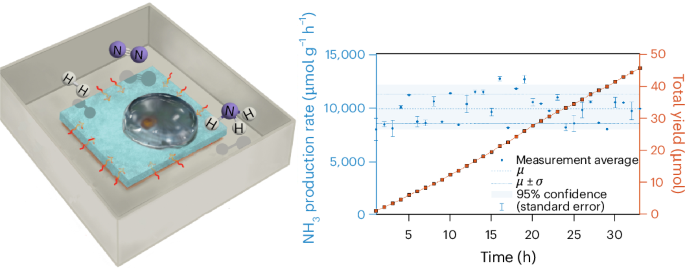2024-09-19 アリゾナ大学
<関連情報>
- https://news.arizona.edu/news/study-over-nearly-half-billion-years-earths-global-temperature-has-changed-drastically-driven
- https://www.science.org/doi/10.1126/science.adk3705
地球表面温度の4億8500万年の歴史 A 485-million-year history of Earth’s surface temperature
Emily J. Judd, Jessica E. Tierney, Daniel J. Lunt, Isabel P. Montañez, […], and Paul J. Valdes
Science Published:20 Sep 2024
DOI:https://doi.org/10.1126/science.adk3705
Editor’s summary
Understanding how global mean surface temperature (GMST) has varied over the past half-billion years, a time in which evolutionary patterns of flora and fauna have had such an important influence on the evolution of climate, is essential for understanding the processes driving climate over that interval. Judd et al. present a record of GMST over the past 485 million years that they constructed by combining proxy data with climate modeling (see the Perspective by Mills). They found that GMST varied over a range from 11° to 36°C, with an “apparent” climate sensitivity of ∼8°C, about two to three times what it is today. —Jesse Smith
Structured Abstract
INTRODUCTION
A long-term geological record of global mean surface temperature (GMST) is important for understanding the history of our planet and putting present-day climate change into context. Such a record is necessary for constraining the relationship between climate and other aspects of the Earth system, including the evolution and extinction of life, and the chemistry of the atmosphere and oceans. Further, quantifying the relationship between GMST and atmospheric carbon dioxide (CO2) concentrations can refine our understanding of Earth’s climate sensitivity and improve future predictions under anthropogenic warming.
RATIONALE
Although several Phanerozoic (the last 539 million years) temperature reconstructions exist, during the intensively studied Cenozoic Era (the last 66 million years), they are colder and less variable than individual estimates from key time periods, particularly during ice-free (greenhouse) intervals. This discrepancy suggests that existing Phanerozoic temperature records may underestimate past temperature change, and merits further investigation using a new approach.
RESULTS
Here, we present PhanDA, a reconstruction of GMST spanning most of the Phanerozoic Eon. PhanDA was created using data assimilation, a method that statistically integrates geological data with climate model simulations. PhanDA indicates that Earth’s temperature has varied between 11° and 36°C over the past 485 million years. This range is larger than previous reconstructions; however, PhanDA agrees well with independent GMST estimates from the Cenozoic, providing confidence in its larger dynamical range.
PhanDA reveals key features in the relationship between GMST and the pole-to-equator temperature gradient, including polar amplification (i.e., larger temperature changes at high latitudes) and a shallowing of the gradient with increasing GMST. Tropical temperatures range between 22° and 42°C, refuting the idea of a fixed upper limit on tropical warmth and suggesting that ancient life must have evolved to endure extreme heat. We parse PhanDA into five climate states and find that overall, Earth has spent more time in warmer climate states than cold ones during the Phanerozoic.
There is a strong relationship between PhanDA GMST and CO2, indicating that CO2 is the dominant control on Phanerozoic climate. The consistency of this relationship is surprising because on this timescale, we expect solar luminosity to influence climate. We hypothesize that changes in planetary albedo and other greenhouse gases (e.g., methane) helped compensate for the increasing solar luminosity through time. The GMST-CO2 relationship indicates a notably constant “apparent” Earth system sensitivity (i.e., the temperature response to a doubling of CO2, including fast and slow feedbacks) of ∼8°C, with no detectable dependence on whether the climate is warm or cold.
CONCLUSION
PhanDA provides a statistically robust estimate of GMST through the Phanerozoic. We find that Earth’s temperature has varied more dynamically than previously thought and that greenhouse climates were very warm. CO2 is the dominant driver of Phanerozoic climate, emphasizing the importance of this greenhouse gas in shaping Earth history. The consistency of apparent Earth system sensitivity (∼8°C) is surprising and deserves further investigation. More broadly, PhanDA provides critical context for the evolution of life on Earth, as well as present and future climate changes.
PhanDA global mean surface temperature across the last 485 million years.
The gray shading corresponds to different confidence levels, and the black line shows the average solution. The colored bands along the top reflect the climate state, with cooler colors indicating icehouse (coolhouse and coldhouse) climates, warmer colors indicating greenhouse (warmhouse and hothouse) climates, and the gray representing a transitional state.
Abstract
A long-term record of global mean surface temperature (GMST) provides critical insight into the dynamical limits of Earth’s climate and the complex feedbacks between temperature and the broader Earth system. Here, we present PhanDA, a reconstruction of GMST over the past 485 million years, generated by statistically integrating proxy data with climate model simulations. PhanDA exhibits a large range of GMST, spanning 11° to 36°C. Partitioning the reconstruction into climate states indicates that more time was spent in warmer rather than colder climates and reveals consistent latitudinal temperature gradients within each state. There is a strong correlation between atmospheric carbon dioxide (CO2) concentrations and GMST, identifying CO2 as the dominant control on variations in Phanerozoic global climate and suggesting an apparent Earth system sensitivity of ~8°C.




